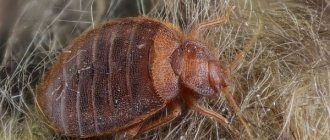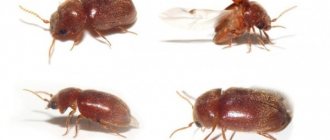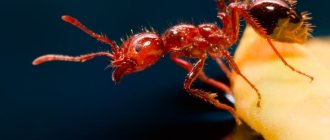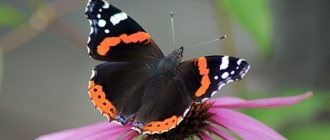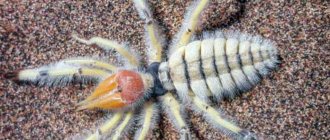Description of domestic decorative mice
Decorative mice are small and very cute pets. There are different types of these rodents, among which you will definitely find your favorite.
Appearance
These animals are small long-tailed rodents. As a rule, their body length does not exceed 10 cm. Their weight can be 12–30 g. Breeders have worked for many years to develop different types of mice.
Rodents can have different types of fur:
- curly;
- long;
- short;
- satin;
- bald.
House mice are also divided into:
- short-tailed;
- long-tailed
If we talk about the color of these rodents, they can be divided into the following groups:
- single-color (brown, black, white, gray, etc.);
- spotted (striped, with colored specks, etc.);
- multi-colored (gray-blue, gray-silver, as well as colors typical of chinchillas, sables, Persian cats, etc.).
Did you know? Mice's joints are similar in structure to those of humans. The number of parts they consist of is the same as that of humans.
Characteristics
Homemade decorative mice are ideal for those people who spend little time at home, cannot pay much attention to the animal, but really want to have a pet. These rodents do not require training, regular walking or educational processes.
Mice quickly get used to a new place, adaptation is painless for the animal. If you treat your pet with care, it becomes tame. Over time, he begins to recognize his owner. Rodents lead an active lifestyle. As a rule, this happens at night; mice sleep during the day. They are cheerful and rarely give up playing. These pets live on average 2 years. Life expectancy depends on the conditions of their detention.
Appearance of a house mouse
The house mouse is a long-tailed small rodent with a body length of 6.5 to 9.5 cm. In relation to the body length, the tail is less than 60%.
The top of the tail is covered with ring-shaped horny scales and short sparse hairs. The weight of an adult is from 12 to 30 grams. The ears are small and rounded. The skin has a brownish-gray or dark color. The color of the abdomen ranges from white to ash-gray. Desert mice have a light yellowish-sandy color and a white belly.
Domesticated mice are variegated, blue-gray, yellow, black or white. Females have five pairs of nipples. In the house mouse, sexual dimorphism is not pronounced.
House mouse (Mus musculus).
Varieties
House mice have a huge number of species. The most famous include:
- Little ones. Such rodents are the smallest mammals in Europe. They are red or brown. The abdomen of these pets is white or gray. The animals grow up to 13 cm in length. They are distinguished from other breeds by the shortened shape of their muzzle.
- Gerbils. Externally, this species resembles chipmunks. They are characterized by a short tail and a relatively large body when compared with other similar rodents.
- Needle mice. Pets of this breed may remind you of hedgehogs. The shape of their fur is like needles. It is this feature that greatly distinguishes these animals from other types of rodents. In addition, they are distinguished from other pets by the appearance of their eyes. They are black in color and have a round convex shape.
Enemies of the house mouse
The house mouse has many enemies, primarily predators. These are birds of prey, snakes, large lizards, mongooses, small representatives of the mustelid family, foxes, cats, crows and even shrikes.
Serious competition for house mice comes from rats, which often kill and even partially eat their small relatives.
In nature, house mice are crepuscular and nocturnal animals, but in human housing they adjust their daily routine to the activities of people.
At the same time, mice themselves can act as predators, which is generally unusual for them.
Once upon a time, mice were accidentally brought to Gough Island in the South Atlantic and took root there. Since they had no natural enemies on the island, they multiplied very quickly and now their population is estimated at 0.7 million individuals. It should also be noted that these island mice are three times larger than their mainland counterparts. They form groups and attack bird nests with them, eating the chicks.
It must be said that Gough Island is the most important colony of sea birds, among which we can mention such birds as the Schlegel typhoon and the albatross. These birds do not nest anywhere else. However, despite the fact that albatross chicks can reach a height of one meter and weigh 250 times more than the mice of this island, they practically do not move and are unable to defend themselves.
Mice diligently keep their nest clean.
As a result, mice literally gnaw through the bodies of the chicks and inflict deep wounds on them. According to scientists, mice destroy over a million chicks on this island every year.
Habitats and lifestyle in nature
Mice live on all continents of the globe, except Antarctica. As a rule, they live in deciduous and coniferous forests, steppe zones, mountains, tropical thickets and swampy areas. They also settle in people's houses.
These rodents make nests for themselves. For this they use dry grass stems. The above mammals are capable of creating a complex system of underground passages in order to live in it. They often occupy existing burrows. Species of these animals that live in swamps can swim, unlike those that live in other areas.
Also learn how to tell a mouse from a rat.
In Russia, mice are common. They do not live only in the northern part of Siberia, in the mountain tundras, on Taimyr and near the Lena and Yenisei rivers.
Animals in their natural environment
Mice live in nature in trees, hollows, burrows, and nests. Some representatives of mice choose arid areas, while other species of mice settle closer to bodies of water. The animals swim well, but prefer not to get into the water.
You can spot the animal in the garden, in the vegetable garden, in the forest, on the field, in the stones. There is not a single corner on earth to which small, agile animals could not adapt.
- Mice dig numerous passages in the ground and build entire tunnels. They spend most of their time underground, raising their offspring. They come to the surface to search for food.
- In trees, mice often occupy abandoned hollows of other animals and build homes in cracks. They build nests like birds' nests from twigs, sticks, and moss. Or they simply destroy ready-made bird nests and settle there themselves.
- In rocky mountainous areas, mice make nests in caves, under stones, and on slopes.
Rodents in nature
You can spot mice in the dark. It is at this time that the peak of activity occurs. The animals look for food, stock up, feed their babies, and mate. If there is a shortage of food, the mouse leaves the shelter during the day at its own risk.
On a note!
In nature, mice behave cautiously, since they are the main food for many predators. Birds, reptiles, hedgehogs eat mice. In any danger, they flee and quickly hide in a hole. But if it is necessary to protect the babies, the female bravely rushes into battle with an enemy who is several times larger than herself.
Rules for keeping at home
We must always remember that people are responsible for those they have tamed. All animals living in the home need proper care, and rodents are no exception. This will be discussed in more detail later in the article.
What should a cell be like?
It is much easier to keep such a pet than, for example, a dog or a cat. A decorative mouse will not take up much space. She spends most of her life in a cage, so she will not claim the personal space of her owner.
Basic requirements for the cage:
- The area for the rodent should not be less than 20 cm².
- Durable material of construction (e.g. iron). If the home is made of wood or plastic, then the mouse can easily gnaw through it.
- No sharp elements.
Home improvement
In order for your pet to feel comfortable and not get bored, it is necessary to properly arrange its home. You need to put a small layer of shavings or sawdust on the floor of the cage. The feeder and drinker should be placed in an easily accessible place so that your hand can get to them. Containers for food and water need to be washed daily, so they should not be deep in the cage.
Important! The cage should be located away from the window and air conditioner. Drafts and cold have a detrimental effect on the animal.
Rodents are very playful creatures. Their space should be equipped with toys. A running wheel and various pipes are ideal for this. You can make several floors or rooms in a cage. The animal will be interested in changing the environment.
Nutrition
Unlike other pets, decorative mice are unpretentious in their diet. They primarily eat grain mixtures, which may include:
- pea cereal;
- wheat;
- oats;
- barley;
- cake;
- flax or sunflower seeds;
- millet.
Rodents will also never refuse such products as:
- apples;
- carrot;
- various nuts;
- cabbage;
- beet;
- cucumbers;
- potato;
- dried fruits;
- porridge (wheat, oatmeal, rice).
You cannot give pets:
- candies, chocolate;
- preservatives;
- smoked meats;
- spicy and fatty foods.
You should always remember that these pets need to have their incisors ground down. For this purpose, it is recommended to periodically place lignified twigs in their cage.
Important! It is forbidden to allow domestic decorative mice to come into contact with lilacs, since it contains elements that are toxic to these creatures.
Nutritional Features
The lifestyle of mice is directly related to their feeding habits. Rodents settle where they can quickly access food. The animals' bodies are designed in such a way that they do not tolerate hunger well. An adult needs to eat about 6 g of a variety of food per day. In case of absolute starvation, the mouse dies within 3 days.
Small rodents prefer plant foods:
- grain crops;
- cereals;
- flour;
- succulent parts of plants;
- roots;
- young shoots of trees;
- bark.
In unfavorable conditions, mice eat berries, fruits, and vegetables. They periodically replenish the body with proteins - they eat caterpillars, beetles, and worms. Don't mind eating birds' eggs.
On a note!
The mouse is not a predator, but when unfavorable living conditions are created, the animal eats its compatriots, cubs, chickens, and carrion.
Nutrition and reproduction of mice
In human territory, the diet of mice expands significantly. They eat all edible foods - ready-made, semi-finished, raw. In addition to cereals, flour, grains they gnaw:
- vegetables;
- bread;
- cheese;
- sausage;
- meat;
- cookie;
- canned food;
- fish.
An interesting fact about mice is that cheese is not a favorite treat for mice. They prefer plant foods more. The marks left by mice's teeth on wood, plastic, bricks, polystyrene foam, and plastic create the impression that mice are omnivorous. But mice chew hard, inedible materials for a different purpose.
Each jaw has a pair of incisors that grow daily throughout life. The animals are forced to constantly grind them down. To do this, they look for hard objects and gnaw them, leaving behind shavings, sawdust, and small pieces.
How to properly care
Pet care should be carried out regularly. Leftover food and trash must be removed every day. The litter is changed several times a week, depending on its condition. To keep your animal healthy, it is important to keep the feeder and drinking bowl clean. The water must be constantly clean.
Water treatments
Due to the fact that these creatures are clean, they are easy to care for. Water procedures should only be carried out if the animal is very dirty, since mice are afraid of water. Before you wet the fur, you need to make sure that this is the only way to clean the animal, and a regular brush will not help.
During water procedures you cannot:
- use shampoos and cosmetics not intended for mice;
- allow water to get into your eyes or ears;
- wash under running water;
- take a lot of water into the bathing bowl;
- talk loudly, as this can cause even more stress for your pet;
- leave the window open and allow a draft in the room where bathing takes place.
Read more about how to determine the gender of a mouse.
Claw treatment
Decorative house mice rarely need to have their claws trimmed. As a rule, they grind them down themselves. But if you see that the animal needs help, it begins to limp, it is difficult for it to move, then in these cases you need help. First you need to carefully examine the paws. If you are convinced that the claws are too long and are in the way of the rodent, they should be trimmed.
For this procedure, it is recommended to use a nail clipper designed for pets (cats, small breeds of dogs). You need to trim very carefully so as not to touch the nail bed and cause pain to your pet. This must be done in such a way as to preserve the natural shape of the claws.
Sense organs of a house mouse
The sense organs of these rodents are very well developed. True, the house mouse's vision is quite weak.
House mice that live near people eat almost any food, including glue, candles, and soap.
Like most other rodents, they are characterized by farsightedness. At the same time, they have very acute hearing. The range of frequencies they perceive is very wide - up to 100 kHz. For comparison, the upper threshold for humans is 20 kHz. In low light conditions, the house mouse can navigate perfectly using its whiskers. The role of smell is extremely important in the life of mice, necessary both for searching for food and for recognizing relatives.
Every mouse has sweat glands on its paws, which they use to automatically mark their territory. If the mouse is very frightened, then a substance is released into the urine, causing fear and flight in other animals. Moreover, the smell is quite stable and lasts up to a quarter of a day, informing other mice that the place is unsafe.
Moreover, if the signal substance was left by a male, then all individuals react to it, while only females react to a female’s mark, while males ignore it.
Reproduction of decorative mice
These animals reproduce very actively. Pregnancy lasts about 20 days. During this period, the female tries to build a nest in the cage; as a rule, the material is sawdust and shavings from the floor. The owner can place hay, small pieces of toilet paper or napkins in the pet’s home. The mouse quickly uses them for its nest.
One female can give birth to up to 15 pups. Childbirth goes very quickly. During the first days, small rodents resemble red spots. The offspring should not be touched with hands, since the mother may then not accept them and stop feeding them due to the fact that she will smell someone else’s smell. After giving birth, you must approach the cage for three days only to change the water and add food. 4 weeks after birth, the mouse reaches puberty.
Did you know? In countries like Vietnam and Rouen, mice are considered a delicacy. People eat dishes made from these animals with great pleasure.
Place of detention
A rectangular metal cage is best. It should be of such a size that your pet can move around freely and have room to do so. Gaps and wooden elements in the cage structure are simply unacceptable in this case.
The bottom of the house is covered with shavings. An excellent necessary addition would be houses, pots, a feeder, and a drinking bowl. Don't forget that the mouse will certainly want to play.
Make sure your pet is protected from drafts. Also, close use of heating elements is not recommended.
Note!
- How to choose a mattress and not make a mistake? Review of the best models, size table
- Cotton blanket: advantages and disadvantages, rules of choice and care
- How to protect a gazebo from rain and wind in summer and snow in winter - a review of the best options
